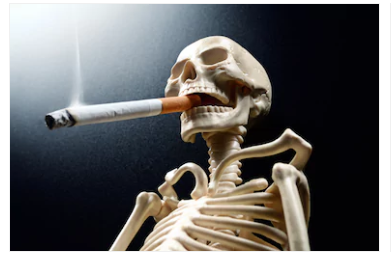On 31st May, a 24-hour abstinence from all forms of tobacco consumption around the globe is encouraged as the world observes World No Tobacco Day, writes Victoria University Kampala’s Dr. Anne Muli (Ph.D.)
The day is intended to highlight the negative health risks associated with tobacco use.The 2018 theme“Tobacco Breaks Hearts” is to raise awareness to the public on the impact tobacco has on cardiovascular (heart) health. Knowledge among large sections of the public of the impact of tobacco use on heart health is low thus the focus of this year’s theme.
Globally, tobacco use and exposure to second-hand smoke exposure is one of the leading contributors to heart disease and contributes to approximately 12% of all heart disease deaths. Unknown to many, heart disease kills more people than any other cause of death worldwide and the intention of this year’s theme is to bring to attention that smoking tobacco and exposure to second-hand smoke contributes to heart disease.
Tobacco smoke possesses high levels of carbon monoxide. Carbon monoxide affects the heart by reducing the amount of oxygen the blood is able to carry.
This means that the heart, lungs, brain, and other vital organs do not always receive enough oxygen to perform everyday functions. At the same time, nicotine causes an increase in heart rate and blood pressure.
Over time, this causes extraordinary “wear and tear” on the cardiovascular system. People who use tobacco are more likely to have heart attacks, high blood pressure, blood clots, strokes, hemorrhages, aneurysms, and other disorders of the cardiovascular system.Smoking actually triples the risk of dying from heart disease.
Cigarette smoking is a major cause of stroke by increasing clotting factors in the blood, decreasing HDL cholesterol levels, increasing triglyceride levels, and damaging the lining of blood vessels. The risk for stroke increases as the number of cigarettes smoked increases.
What about second-hand smoke?
Second-hand smoke represents a more formidable problem than many people realize. Second-hand smoke is a combination of the smoke given off by the burning end of a cigarette, pipe, or cigar and the smoke exhaled from the lungs of smokers. There is no evidence of a safe level of exposure to second-hand smoke.
In fact, long-term exposure to second-hand smoke has been shown to cause a 30% increase in the risk of heart disease in non-smokers. It is estimated that 37,000 heart disease deaths per year are caused by exposure to second-hand smoke.
Exposure to second-hand smoke also negatively affects cardiovascular health by decreasing exercise endurance, damaging blood vessel walls, and increasing the tendency of blood platelets to clot, contributing to heart attacks. Furthermore, nonsmokers’ bodies tend to react more dramatically to tobacco exposure than do smokers’ bodies, so lower levels of smoke can cause adverse effects.
Situation in Uganda
In 2007 Uganda became a party to the World Health Organization Framework Convention on Tobacco Control (FCTC), the first international public health treaty adopted under the auspices of WHO.
Its intention is to reduce the growth and spread of the global tobacco epidemic and protection of the public from exposure to tobacco smoke through actions such as tax and price measures to reduce tobacco consumption;
a comprehensive ban on tobacco advertising sponsorship and promotion; prominent health warnings on tobacco packaging;
smoke-free work and public spaces and measures to reduce the smuggling of tobacco products. Additionally, Uganda has a strong Tobacco Control Act passedin 2015.
The act includes a comprehensive ban on smoking in all public areas and all forms of tobacco advertisement, promotion, and sponsorship. However, despite the policies in place, tobacco smoking in Uganda is still rife. It is estimated that about 1 in every 10 Ugandans use tobacco products daily.
Therefore we have a large population at risk of heart disease and other diseases due to smoking and exposure to second-hand smoke. This year’s World No Tobacco day theme is very timely. Let us all join hands to choose health, not tobacco.
 The author, Dr. Anne Muli (Ph.D.) is a Public Health Practitioner and Lecturer at Victoria University.
The author, Dr. Anne Muli (Ph.D.) is a Public Health Practitioner and Lecturer at Victoria University.











